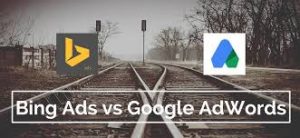How to Use Bing to Advertise

Bing Ads is an advertising platform used to display ads on the Bing network including bing.com, yahoo.com, and aol.com. Smaller affiliates like duckduckgo.com and slickdeals.net also fall under this umbrella.
Ads show up on Bing when a visitor searches just as they would on any other search engine. The top and sides of the page are premium real estate, and you want to be sure people notice you first by making your ads relevant.

How Bing Advertising Works
Bing shows ads relevant to a visitor’s search based on the terms used. Searching for “hardware store Kansas City” will return ads for hardware stores in Kansas City. Yes, that’s quite obvious. However, you may not know that whenever someone conducts a search, Bing gives ad placement to the highest bidder. Just because you have an ad on Bing, doesn’t mean people will see it.
Bing makes money off of the ads businesses place, so if you outbid your competition, your ad is more likely to appear. However, Bing only gets paid when someone clicks an ad. That’s because you only pay Bing when someone clicks on your ad.
This is why relevancy matters. If you operate a hardware store in Dallas, your ad will never appear using the search terms above no matter how much you bid, because no one would ever click on it. They need hardware stores in Kansas City, not Dallas. Showing irrelevant ads profits no one.
On your end of the ad, make sure when a visitor clicks your ad, it sends them where they expect to go. If your ad promotes drills, send the clicker to the drill page of your hardware store website, not the page with pipe fittings.
Advantages of Bing
Bing has a host of advantages that are similar to other search engines. Using proper keywords, you get your business in front of people when they need it, increasing your conversion rate. You only pay if your ad works, so you don’t spend money on useless advertising, and you’re less likely to exceed your budget by placing bids for the maximum you’re willing to pay.
You can also track your engagements on a dashboard, showing you how many people saw your ad, how many times they clicked, and how much you paid for each click, giving you the ability to segment your future ads based on what worked and what didn’t.
While Bing doesn’t have the same volume as Google, this proves to be beneficial. Fewer businesses advertise on Bing, meaning less competition for you, better ad positioning, lower cost per click, and higher quality conversions.
Cost of Bing
A pay per click model determines how much advertisers pay for ads. You only pay when someone clicks your ad, but how much you pay depends on how much you bid. You pay different amounts based on keywords. Niche keywords in small communities can cost less than $0.20 while popular keywords in big markets cost more than $20.
Bing’s keyword planner suggests bids for your ads, so you have an idea of how much you need to bid for your ad to appear in someone’s search terms. You choose how much you are willing to pay based on how much you stand to profit from acquiring conversions. $20 is worthwhile if a new customer means $500 or more to your business.

Factors to Consider
Switching to Bing from Google doesn’t mean you’ll lose your previous campaigns. When you sign up for a Bing account, you have the option to import these from Google AdWords. You can then use them to run similar campaigns and benchmark which service is better for your business.
Diligent keyword research tells you which terms have high volumes and low competition. Bid on keywords with purchasing intent. If someone searches for “best toilets to buy,” it’s likely they plan to buy one soon. If they search for “best toilet repair near me,” you don’t want your hardware store ad to appear. That is unless you also offer toilet repair services.
After selecting targeted keywords based on your product, service, or location, you can also choose your match type. This allows you to select how closely you want your keyword to match the user’s search when your ad appears. Broad matches will look for searches containing synonyms of your keyword, whereas exact matches will only show up when someone searches for that exact keyword or phrase. Broad matches have the potential to appear on searches that aren’t relevant to your business, so you may have to narrow your match type over time after some careful study.
After several months, you should review and optimize your ad to improve future results. You have visibility to keyword impressions so you can refine and change as needed. Remember to remove negative keywords from your campaign.
Bing has a variety of targeting options you can use after you evaluate your initial campaign. You can run A/B tests, increase your visibility on weekends where you see more traffic, and bid higher on demographics like age or gender.


